“He gave me the keys and said take it for a drive. I almost cried when I jumped in, and as I drove the car up through the mountains like something from the Sound of Music I had tears in my eyes. It was fantastic. I brought it back to him half an hour later and asked if he’d sell it. He said: “No, my dad gave it to me, but I am glad that you’ve seen it.” I thought how on earth am I going to get this car? The car was my father’s 1955 Mercedes-Benz 300SL Gullwing.
My father was what one would think of as a gentleman driver in the classic sense. Born in 1910, he was a naval officer by day and in his spare time he raced cars and flew planes. He always had fast cars; whatever was the newest and most technologically advanced. He would never dream of buying something that was old, frankly; in those days nobody collected old cars apart from eccentrics and students who couldn’t afford a new one.

Before he died I asked him to leave me a list of all the cars he had owned. He kept files meticulously, and I managed to find some of the more significant vehicles but I couldn’t track down the Gullwing. They built 1400 between 1954 and 1957 so they’re reasonably rare.
My father was one of the first people in the UK to order one, and the correspondence between him and the dealer in London specified that it would be silver, like the Mercedes-Benz racing cars, that it would have this slightly unusual leather interior in a colour called Red Brown, and that the driver’s seat would be an inch lower because my dad was quite tall. At the time it was the fastest road car that you could buy anywhere in the world.
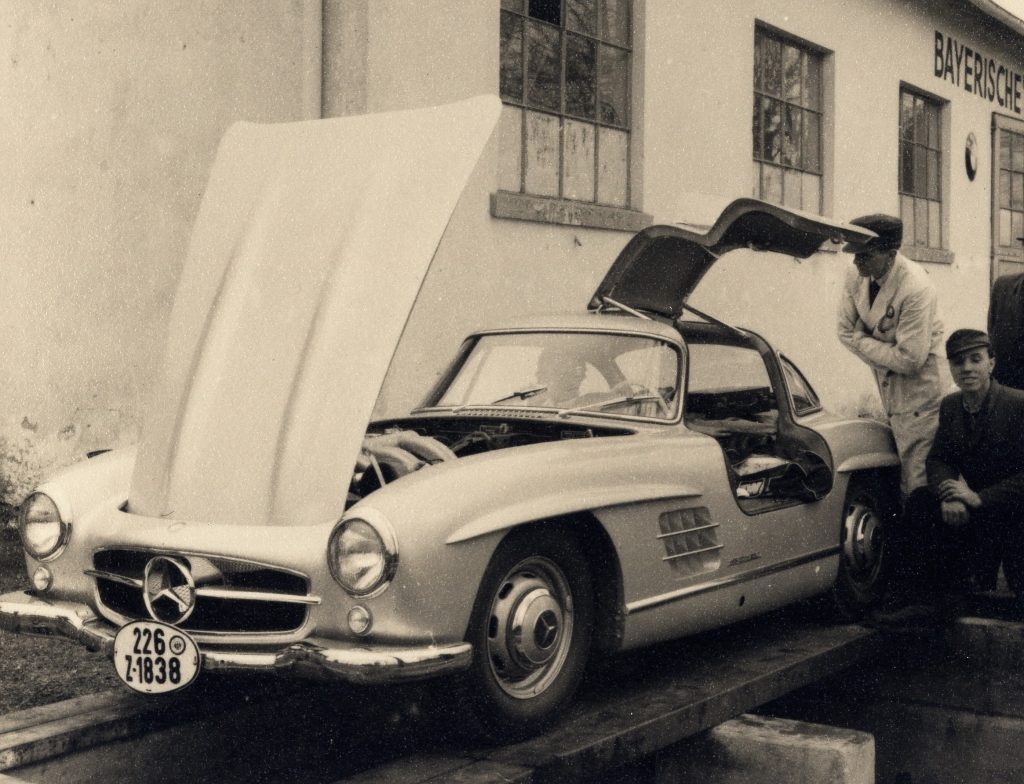
In April 1955 my dad collected it from the Mercedes-Benz factory in Germany. I’ve still got the business card of the man that handed it over. He promptly took it to the Nürburgring and drove it round the track – I’ve even got the petrol receipt from the first time he filled it up at the Esso petrol station nearby.
The car was then flown by cargo plane to England and enjoyed for the next six years. All of the trips he took – which included the Mille Miglia in 1956, where it got dented by a Fiat Topolino – are logged in his notes, including stopping points, average speed and fuel consumption.
In 1960, my father ordered a Maserati 3500 GT in bright red with cream leather interiors. The Mercedes didn’t get used much after that and in 1961 he sold it to a car dealer for £1200. That was the last he ever heard of it.
I started my first job in the car world in 1988 and whenever I had some spare time I would reach out to contacts to see if anyone knew where the Gullwing was. Sometimes there was a flurry, but the trail always went cold. My dad died in 1996, and I still hadn’t found it.
Fast-forward to 2010, and something made me wonder if the car was in Switzerland. My secretary had become fairly friendly with a lady at the Swiss car registration authority and I asked if she would call, give her the chassis number and see if it was registered there.
Lo and behold, it was registered at an address in the tiny little village where I used to go to school near Gstaad. I must have driven past hundreds of times, first as a kid in the school bus and later driving myself. If indeed the car was there, it had been under my nose for the past 30 years.
I called the owner of a luxury hotel in Gstaad who I knew very well, and he knew the man that lived at the address. I asked would he mind giving him a call, telling him who I am and that I want to meet him. He called back a few hours later and confirmed he did have the car, and would be delighted to meet me.
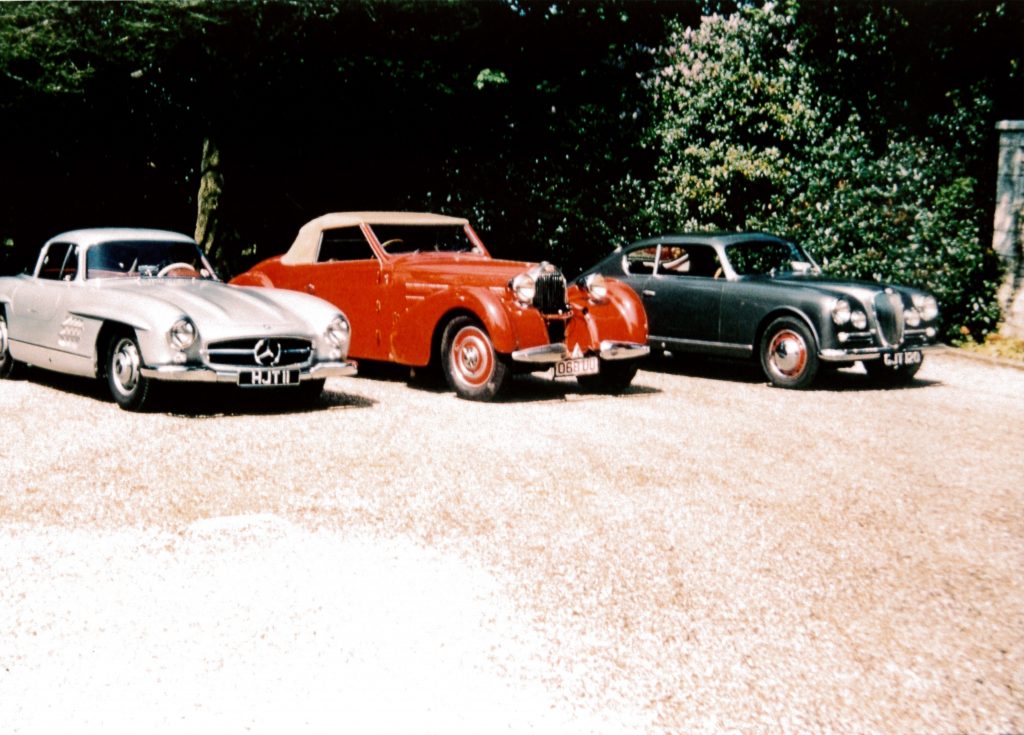
I was in America and had to find a way of getting back to Europe – planes had been grounded because of the volcanic ash cloud [after the Icelandic volcano Eyjafjallajökull erupted]. At one in the morning my PA called to say there’s a flight to Rome and I can get a car to collect you from the airport and drive you the 1000km to Switzerland.
The owner was a very earnest guy, he wore dungarees and workman’s boots. He opened up the garage door, and there, for the first time in my life (the car was sold long before I was born) was my dad’s Gullwing. He had an amazing history file which took up from the moment my dad sold the car until the present day – it included a picture of Stirling Moss driving the car for a BBC documentary in the sixties.
I had a Gullwing of my own by that stage, it was a beautiful car, but it didn’t have family history. The owner didn’t want to sell, so whenever I went up to Gstaad I would pop in and see him. He didn’t speak English, I didn’t speak German, so we spoke in French.
I would buy a picnic hamper or leave a bottle of whisky, wine or champagne. I went to the local gift shop and got my German PA to tell me how to write in German, “I hope you are well, one day I hope to own your Gullwing.” This sort of courtship went on for years until one day he said, “Maybe if you had a silver Swiss registered Gullwing in fantastic condition we could consider doing a swap.” So, of course I went and found a really nice Swiss registered silver Gullwing with original Rudge wheels. I bought that, but he was in a hurry to do nothing.
Finally at the end of 2018, he said “OK, I will do the deal.” When the day came, it was like some sort of automotive swingers party. We met up for lunch, put our keys on the table and when we had finished our meal, we left with each other’s respective cars. I knew it was a terrible deal commercially – his car, my father’s car, had very basic specifications. It was exactly 30 years to the month since I started looking for the Gullwing that I finally drove it home.
A classic Mercedes specialist did all the immediate jobs that needed doing to make it reliable and safe. I went to The ICE in St.Moritz, put studded tyres on and drove it on the frozen lake – it was great fun sliding around. I also used it as the back up car for the Mille Miglia and to drive to the office.
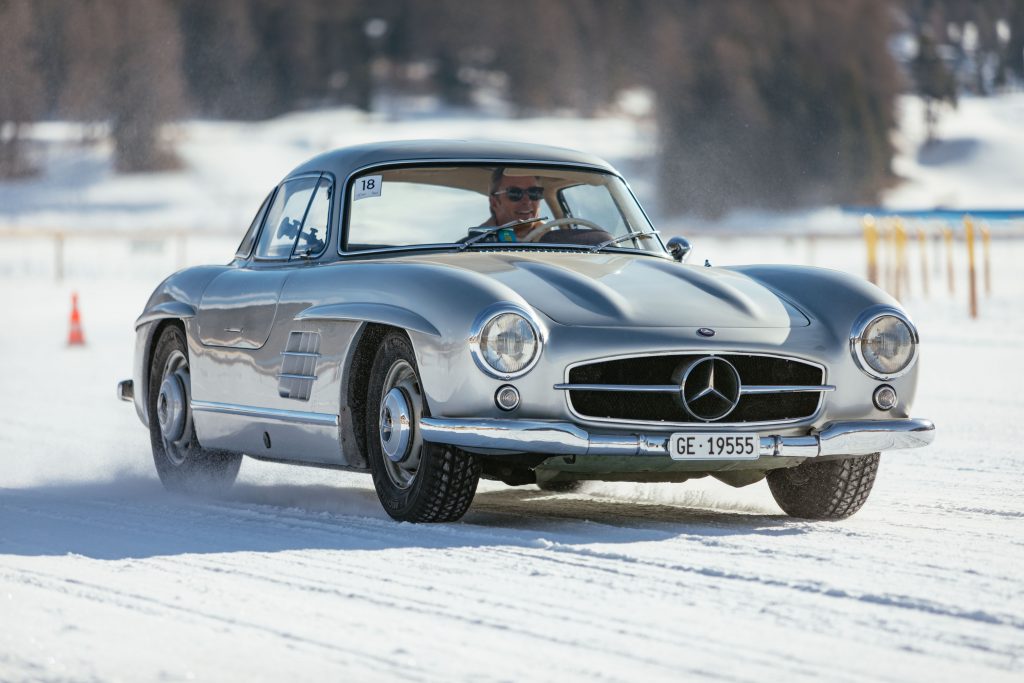
At the end of 2019 I took it to HK engineering, the Gullwing specialists in Munich Germany. The engine still had the yellow factory markings on it. It’s had a full mechanical rebuild, but I asked them to do a conservative restoration to make it look like nothing has been touched. I want to feel that as many of the surfaces that my father would have touched all those years ago are still the ones that I’m touching.
When I collected it I drove nearly 800km in one day. It’s one of those cars everybody recognises, you get lots of thumbs up on the motorway. The design has aged well, and it’s quite emotional to think that when that car was driving along the road in 1955, having been collected by my dad from the factory, it attracted interest, and sixty six years later it’s still a car that people look at with admiration. Although it’s no longer the fastest car on the road, it’ll do 140mph, and I think most people would be surprised that something that old could be that quick.
Whether it’s steering, accelerating or braking you’ve got to plan all of your inputs a little bit ahead of time. You feel the transfer of mass around the four corners of the car when you start to drive it quickly – it’s very satisfying. It transports you back to another time and another place. Although dad had a variety of different cars, this was one that he was always very fond of.
I like stories that come full circle and it’s great that the car is back with our family and will hopefully stay in the family for many years to come. In business, I find cars for friends and collectors that were once in their family. They don’t have to be super valuable, it’s not about what they are worth, it’s the human story behind them that I think that is the most precious thing.”
Read more:
The One That Got Away: Maria Costello and her Suzuki RGV250
From wreck to dream drive: Simon Kidston’s astonishing £400,000 restoration of a one-of-a-kind Lamborghini Countach LP400


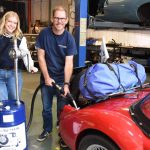


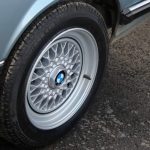
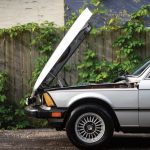


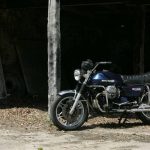
Super story! Very much enjoyed reading it. Your persistence paid off handsomely Simon!
Dermot, Ireland 🇮🇪
I’m
So glad I ran across this story of nostalgic family reverence. It brought back memories of black and white photos of my fathers love of the automobile. Thank you.
Jay A Christianson,
Hollywood, CA